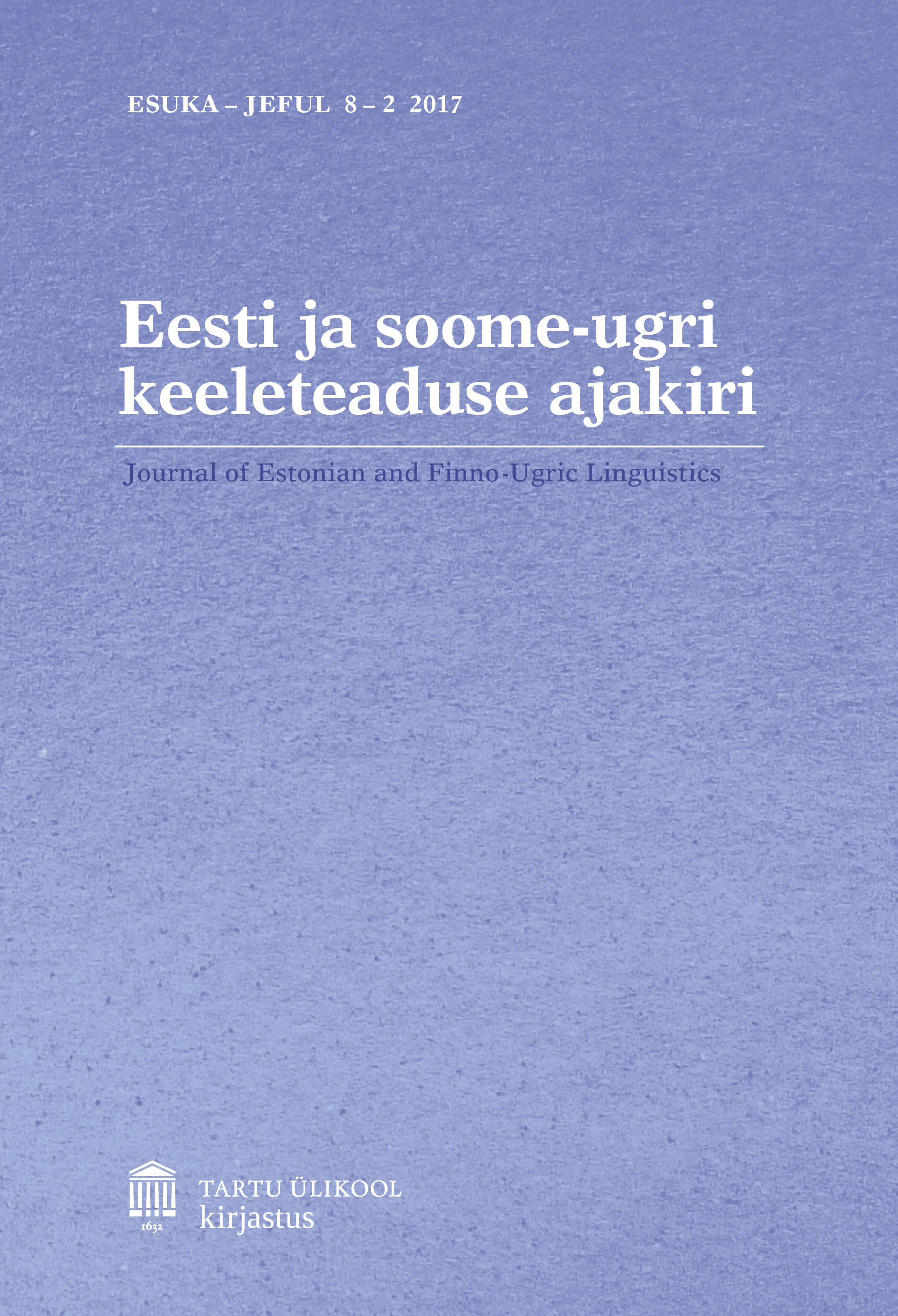An autoencoder-based neural network model for selectional preference: evidence from pseudo-disambiguation and cloze tasks
DOI:
https://doi.org/10.12697/jeful.2017.8.2.04Keywords:
neural network, autoencoder, semantic vector, usage-based model, FinnishAbstract
Intuitively, some predicates have a better fit with certain arguments than others. Usage-based models of language emphasize the importance of semantic similarity in shaping the structuring of constructions (form and meaning). In this study, we focus on modeling the semantics of transitive constructions in Finnish and present an autoencoder-based neural network model trained on semantic vectors based on Word2vec. This model builds on the distributional hypothesis according to which semantic information is primarily shaped by contextual information. Specifically, we focus on the realization of the object. The performance of the model is evaluated in two tasks: a pseudo-disambiguation and a cloze task. Additionally, we contrast the performance of the autoencoder with a previously implemented neural model. In general, the results show that our model achieves an excellent performance on these tasks in comparison to the other models. The results are discussed in terms of usage-based construction grammar.
Kokkuvõte. Aki-Juhani Kyröläinen, M. Juhani Luotolahti ja Filip Ginter: Autokoodril põhinev närvivõrkude mudel valikulisel eelistamisel. Intuitiivselt tundub, et mõned argumendid sobivad teatud predikaatidega paremini kokku kui teised. Kasutuspõhised keelemudelid rõhutavad konstruktsioonide struktuuri (nii vormi kui tähenduse) kujunemisel tähendusliku sarnasuse olulisust. Selles uurimuses modelleerime soome keele transitiivsete konstruktsioonide semantikat ja esitame närvivõrkude mudeli ehk autokoodri. Mudel põhineb distributiivse semantika hüpoteesil, mille järgi kujuneb semantiline info peamiselt konteksti põhjal. Täpsemalt keskendume uurimuses objektile. Mudelit hindame nii valeühestamise kui ka lünkülesande abil. Kõrvutame autokoodri tulemusi varem välja töötatud neurovõrgumudelitega ja tõestame, et meie mudel töötab võrreldes teiste mudelitega väga hästi. Tulemused esitame kasutuspõhise konstruktsioonigrammatika kontekstis.
Võtmesõnad: neurovõrk; autokooder; tähendusvektor; kasutuspõhine mudel; soome keel


